Ukraine’s battle crucial for dismantling global “axis of evil,” defense expert claims
Ukraine's role in the global geopolitical chessboard is pivotal; if it falls to Russia, defense expert Mykhailo Samus warns, the resulting shift would empower an aggressive alliance led by China, North Korea, and Iran.


Beyond the fighting on Ukraine’s frontlines, a global undeclared war is unraveling. China has built a vast network of proxy forces that stoke conflicts worldwide to undermine its primary adversary, the United States.
The growing Russia-China-North Korea-Iran alliance exchanges money, expertise, and military technologies, and plants deadly technology in the hands of rogue states.
The US continues eyeing China as its main adversary, employing a “fire-fighting approach” to erupting conflicts, hesitating to provide aid to Ukraine, and pressuring it to limit its response to Russia’s invasion.
However, exactly Ukraine is key to dismantling the growing “axis of evil,” says seasoned Ukrainian defense expert Mykhailo Samus, and if it falls, the undeclared war will spiral out of control.
Underfunded and undersupplied, Ukraine keeps fighting, the outcome of the global future of democracy resting on its shoulders.
In an interview with Euromaidan Press, Samus sheds light on the specific ways China, Russia, North Korea, and Iran support each other and emphasizes why Ukraine’s victory is crucial for dismantling this “axis of evil.”

Ukraine’s win vital in the fight against “the axis of evil”
Kyiv’s Western partners closely monitor the sentiment in Ukrainian society, and if Ukrainians lose the will to fight, the aid will cease, says Mykhailo Samus. He believes that Washington’s six-month delay in approving aid was a test of Kyiv’s true intentions.
“If Ukrainians stop fighting, the processes will conclude, and the US and Europe will lose, despite potentially thinking otherwise. China and Russia will then dictate terms. Ukrainians persevered, aid is being allocated, and the war is now entering a new stage,” the expert predicts.
The US and Europe provide Ukraine with approximately $100 billion annually, nearly doubling its GDP and resources for the war effort, highlighting Ukraine’s pivotal role in determining the fate of the world.
The approval of US aid suggests Donald Trump changed his stance on the Ukraine war. Previously, he may have thought appeasing Russia by allowing it to take Ukraine could pull Moscow away from Beijing. However, Trump likely now realizes that if Russia breaks through, the “axis of evil” would become unstoppable.
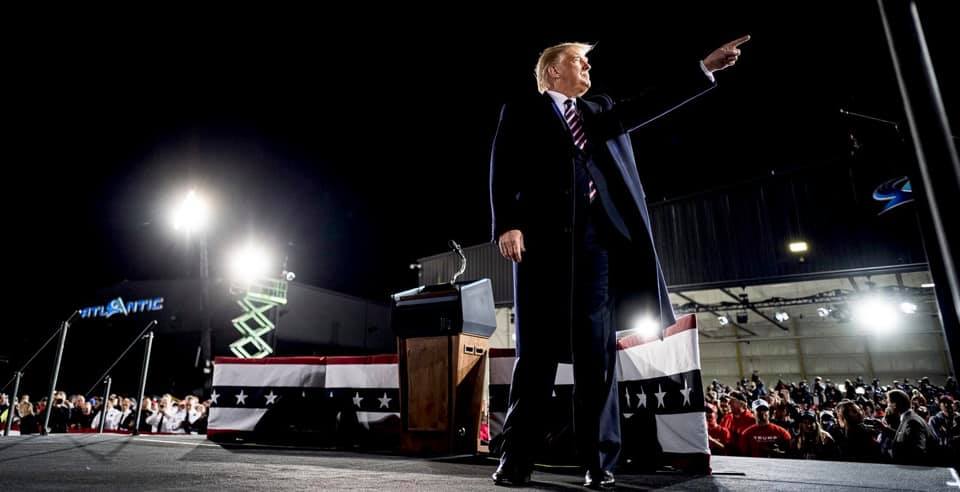
“Trump could have been convinced that a Ukrainian victory provides a chance to pull Russia away from China. Fighting China is Trump’s priority, so dismantling this axis and then dealing with China alone would be very beneficial,” the expert suggests.
A Ukrainian victory over Russia would lead to Russia’s gradual transformation and disintegration, significantly altering the global landscape. China may also undergo transformation, as rapid high-tech development could trigger social processes that the Communist Party may struggle to control.
However, Ukraine’s perseverance is crucial. If it stops now, democracy loses. But if Ukraine continues fighting, democracy has a chance. The outcome rests on Ukraine’s shoulders.
North Korea: China’s proxy for military aid to Russia against Ukraine
Although China downplays its importance, the front in Ukraine is critical to Beijing’s interests. To aid Russia, China has forged a complex economic-military alliance through a trilateral arrangement with Russia and North Korea that functions as follows:
- A circular yuan flow – Russia obtains yuan from selling oil to China, which it reinvests in North Korea.
- North Korea uses those yuan to procure Chinese materials, components, electronics, and machinery to produce weapons and military equipment for Russia in support of its aggression against Ukraine.
- Russia reciprocally acquires industrial goods like machinery, components, and microelectronics from China using the yuan proceeds.
- Russia comprehensively bolsters North Korea’s strategic missile, nuclear, and submarine programs through technology transfers, including sharing ballistic missile expertise.
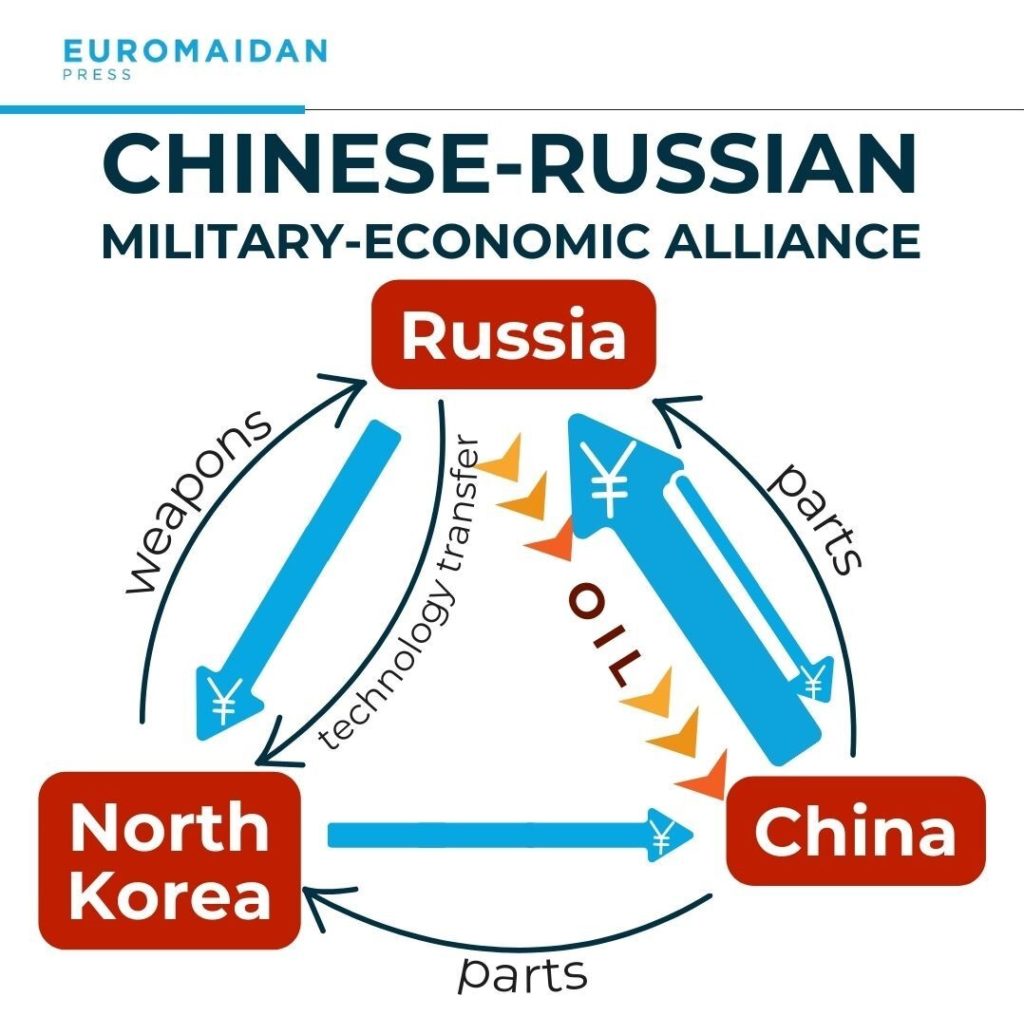
This trilateral arrangement allows Russia to circumvent sanctions imposed due to the invasion of Ukraine, enables North Korea to fund its military development, and provides China with economic leverage, all while indirectly challenging US power through its allies.
According to Mykhailo Samus, “North Korea serves as China’s proxy to provide military assistance to Russia. However, Beijing’s primary objective is diminishing US influence.”
Following the Cold War, Russia had upheld an embargo on cooperating with North Korea but now flagrantly violates UN resolutions. The rapid advances in North Korean missile capabilities this year alone demonstrate Russia’s illicit technology transfers.
“Russia is transferring any technologies to them, which is evident from North Korea’s missile technologies developments. Just in the beginning of this year, they conducted several tests of new missiles, new submarines, and it’s obvious that this is linked to Russia,” says Samus.
Indeed, North Korea has made significant advancements in its missile capabilities in recent months:
- On January 29, Kim Jong Un supervised tests of cruise missiles designed for submarine launches and reviewed efforts to build a nuclear-powered submarine.
- On March 20, Kim oversaw a successful test of a solid-fuel engine for a new intermediate-range hypersonic missile.
- On April 2, Kim declared that North Korea had acquired the ability to build solid-fuel, nuclear-capable missiles of all ranges, pursuing an arsenal that can credibly threaten rivals in Asia and the United States.
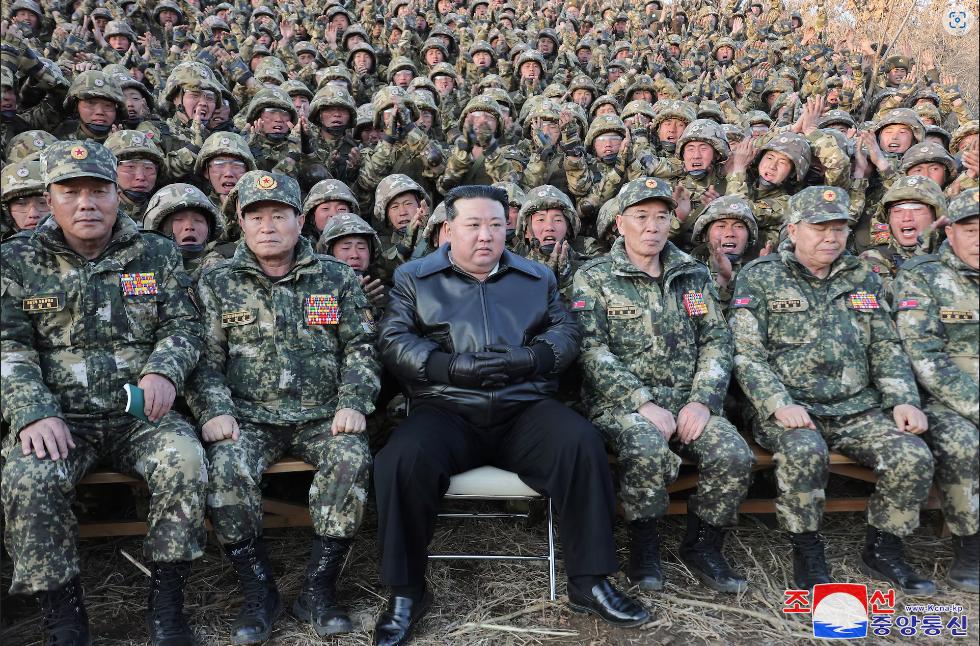
Crucially, North Korea’s regional provocations benefit China by threatening South Korea, Japan, and Taiwan – global microelectronics manufacturing powerhouses. Disrupting any of them would deal a severe blow to high-tech production worldwide, undermining US allies and creating opportunities for China to further its interests in the region.
Iran: united with China against the US
The dynamic with Iran differs as it is more self-sufficient, yet parallels exist. Iran supplies Russia with Shahed drones and drone technologies, while Russia provides Iran with Su-35 jets and technological assistance.
Samus is confident that Russia aids Iran’s missile and nuclear programs, stating,“While Iran can operate centrifuges, progressing from the 1950s to modern capabilities is arduous and costly without external support.”
Indeed, on April 23, Rafael Grossi, the head of the United Nations nuclear watchdog, warned that Iran could have enough enriched uranium to make a nuclear bomb in just weeks. He also noted that Tehran’s activity, coupled with the limited access it grants to its facilities, “raises eyebrows.”
Russia also leverages Iran as a proxy force in the Middle East to jointly undermine US and Western influence, aligning with China’s objectives.
“An interconnected situation is emerging – North Korea’s activities link to Ukraine, with its missiles used by Russia. Iran’s involvement ties to Ukraine through Shahed drone deployments. Their performance informs enhancements benefiting other fronts, like the recent Iranian strikes on Israel.”
Those strikes directly capitalized on Ukrainian combat experience – circumventing air defenses, mapping their configurations through intelligence, countering electronic warfare, and overwhelming systems through swarming tactics.
The mass drone usage originated in the Russo-Ukrainian war, providing valuable lessons for the “axis of evil” to employ more effectively elsewhere.
Significantly, Iran’s latest attack on Israel was an overt display of force, potentially involving nuclear capabilities.
“It showcased their nuclear delivery vehicles, hinting they already possess nuclear arms – an explicit warning of potential nuclear retaliation if escalation continues,” said Samus.
Consequently, the US urged Israeli restraint in response to Iran’s attack, aiming to prevent further escalation.
However, Samus perceives this approach as projecting weakness, drawing parallels to the American pressure on Kyiv to limit Ukraine’s response throughout Russia’s invasion. The US only provided Ukraine with long-range ATACMS missiles in the third year of the war, a delay that could have led to a significantly different outcome had they been supplied earlier.
“The current troubled situation on the Ukrainian front stems from the Biden administration’s constant push to de-escalate the war. Russia correctly interprets this as weakness, merely intensifying its offensives,” notes the analyst.
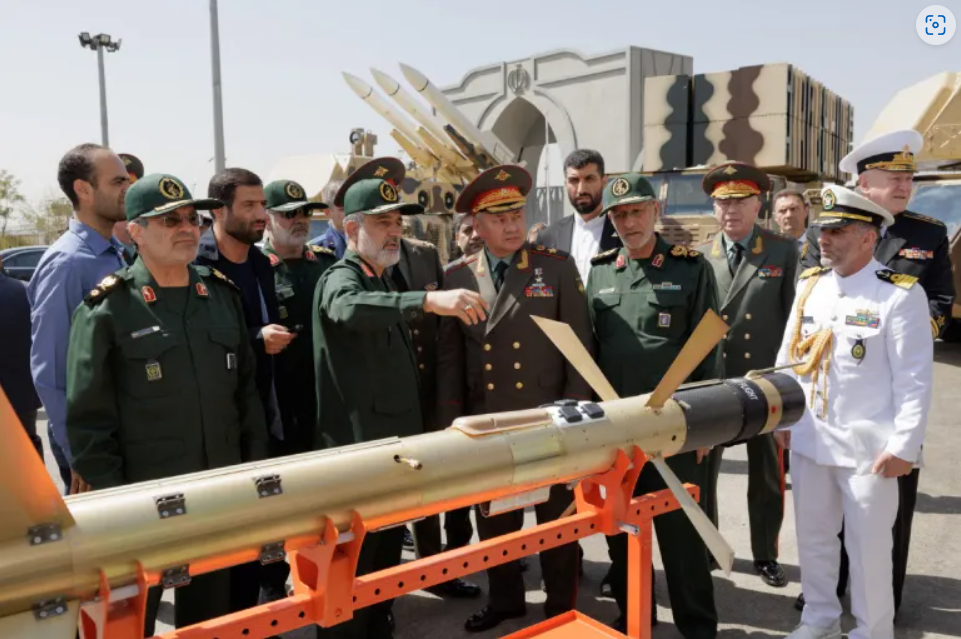
Similarly, Iran has effectively won the psychological duel against the US. The core issue, however, is that Washington appears paralyzed and uncertain about how to confront the increasingly emboldened and tightening “axis of evil.”
China: the lynchpin of the “axis of evil”
China represents the lynchpin and material foundation enabling the “axis of evil.” It cynically wields Russia and North Korea as proxies to undermine US power. Beijing viewed Russia’s invasion of Ukraine as a calculated strike against American influence, but miscalculated – Ukraine’s resilience only amplified US sway as Europe accelerated its rearmament.
As Samus explains, “China’s strategic calculation was clear: Russia would subjugate Ukraine, eroding US influence in the post-Soviet sphere and across Europe, while China leveraged North Korea and Russia to marginalize the US presence in East Asia – a comprehensive, multi-domain campaign.”
A parallel dynamic plays out in the Middle East, where China maintains the same core interest of diminishing US regional clout, even if not overtly involved.
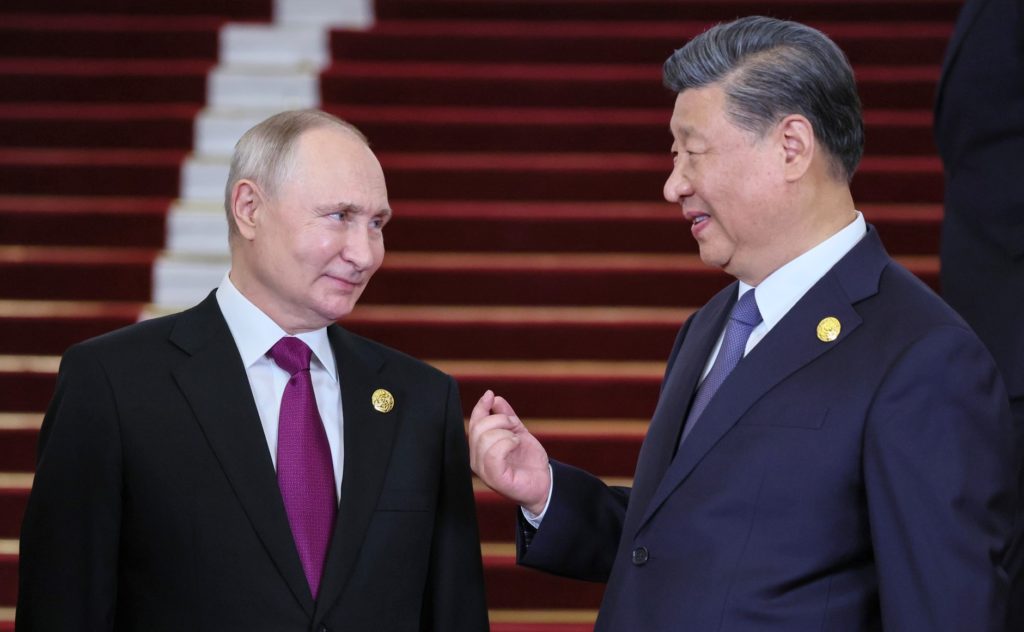
However, the US currently lacks any coherent strategic vision to address these multifaceted challenges from the “axis” – in the Middle East, vis-a-vis Russia and China, or even regarding Ukraine.
This vacuum is precisely what Republican critics highlight, enshrining a legal requirement for the president to present a Ukraine strategy within 45 days of the $60 billion aid bill’s passage.
Conversely, Donald Trump claims to possess formulated strategies to address these challenges.
“The current disarray signifies a crisis in American foreign policy. A comprehensive strategic reassessment is urgently needed, but its direction depends on the US election outcome,” Samus warns.
Taiwan: a war that would be suicidal for China
Had Russia occupied Ukraine, it would have severely undermined US influence. This could have emboldened China to conduct a military operation against Taiwan. However, that window of opportunity has been lost.
If Trump wins the US election, he will focus on diminishing China’s influence over the American economy through draconian tariffs on Chinese companies and goods.
“Imagine if Beijing launches a war for Taiwan now. Even if China seizes it, they would face extremely difficult times – sanctions, Europe cutting ties, a tremendous blow,” asserts Samus.
For Trump, this would signal a need to drastically bolster support for all US allies – not just in East Asia like South Korea and Japan, but also Ukraine, Europe, and Israel.
“It would deal a severe blow to the ‘axis of evil.’ I hope China understands this. They are currently trying to act very cautiously, portraying themselves as supporting peace and respect for international law,” the analyst says.
Isolationism vs. Globalization: trends in China and America
An attempt to seize Taiwan would isolate China, which is against Beijing’s interests. China’s prosperity relies significantly on integration with the global economy, especially the US and European markets.
China’s ambitious Belt and Road Initiative, launched in 2013, aimed to rival American influence by investing in infrastructure across more than 150 countries and integrating them into its economic orbit. However, Putin’s aggression in Ukraine derailed China’s plans for transit routes through Russia, Ukraine, and Belarus into Europe.
Another key transit corridor for China is the Red Sea, where Iran-backed Houthis attack shipping, blocking oil and goods transportation – undermining Chinese interests, ironically benefiting Russia through higher oil prices.
“China has entrapped itself. Invading Taiwan would only accelerate its economic unraveling, not provide an escape,” asserts the analyst.
Ongoing shuttle diplomacy, with Chinese envoys visiting Europe and Western officials traveling to Beijing, aims to negotiate for China to recalibrate its stance on Russia and other rogue states disrupting global markets and security. They may propose creating safeguards to prevent a Trump administration from dealing devastating economic blows to China.
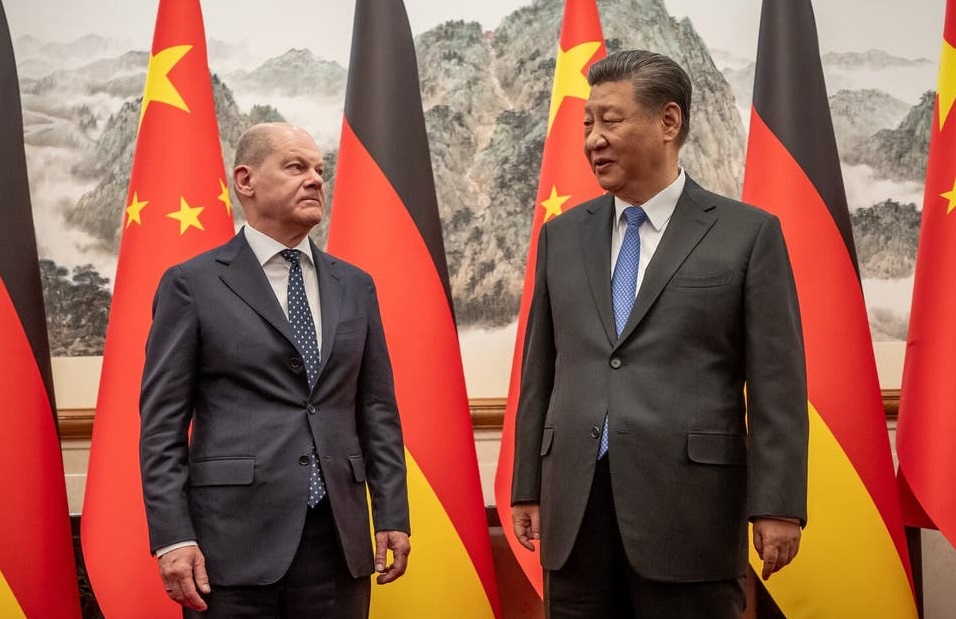
Isolationism holds no appeal for the US either, as Washington needs globalization to regain economic leadership. However, the US aims to achieve this by driving the next technological revolution and reshoring its industry, moving away from the offshoring of manufacturing to China that has been prevalent since the 1970s.
“The US aims to build a powerful, cutting-edge industry that becomes the global leader, not by shipping back 1970s factories, but by creating advanced, high-tech manufacturing,” explains Samus.
The US seeks to create a world where advanced American-made robots and other high-tech goods produced with new-generation technologies are in high demand, a strategy mirrored by Europe.
“Major microelectronics plants by Taiwanese firms are being built in France, Germany, Britain, and the US. They’re striving to remove key industries from Chinese control, fostering self-sufficient microelectronics and chip clusters, as AI will dictate industrial development – with American and European leadership, not China’s.”
Initiatives like Elon Musk’s Starlink exemplify America’s strategic ambitions, targeting the underserved developing world to project American connectivity and digital infrastructure influence into those emerging markets, reinforcing broader goals of asserting global technological leadership.
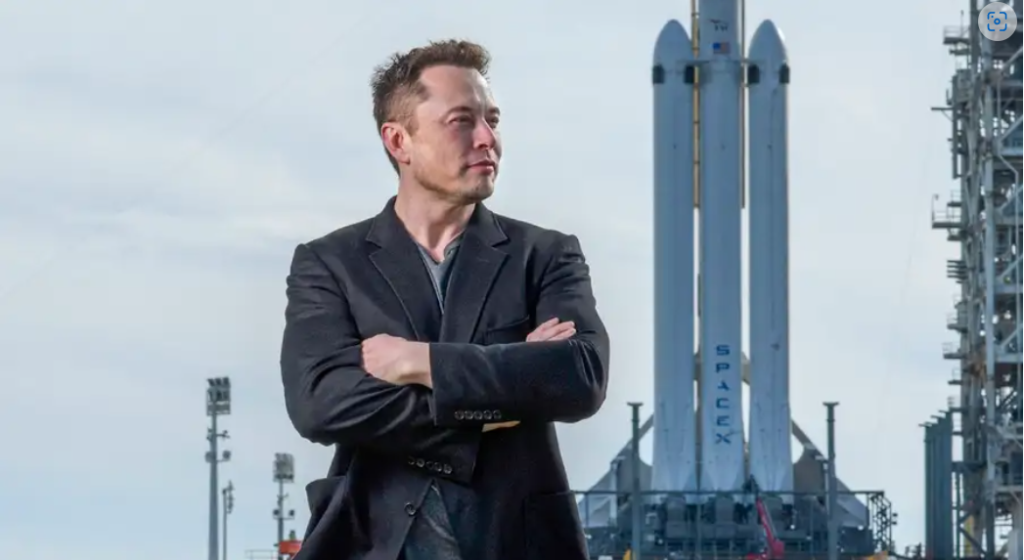
As AI’s globalizing nature makes globalization irreversible, the question of who will become the technological leader under these new industrial principles remains open.
The BIG tech clash: the AI race determines the next global leader
The rapid technological advancements driven by artificial intelligence are occurring amidst a profound crisis in the international system of relations. The world is transforming quickly, necessitating a ‘world policeman’ role that will be determined by the victor emerging from the ongoing technological competition.
“We are witnessing an undeclared global war,” Samus states. “Russia has overextended itself, while China intended to leverage the Kremlin as a proxy force to defeat its prime rival, the United States.”
The “axis of evil” countries advocate for a “multipolar world,” implying their intention to impose new global orders through force. They are currently attempting to dismantle the existing order via hybrid warfare tactics, deploying proxies, terrorist organizations, insurgents, and private military contractors, with the aspiration to dictate their own world order post-victory.
“They have not abandoned these ambitions. But the US and Europe are gradually engaging, recognizing that further complacency risks awakening to a reality where dictatorships dominate and democracies are diminished to a civilizational dead-end.”
Victory in the AI race will determine which global vision – democratic or authoritarian – shapes the future world order. The stakes could not be higher as rival powers vie for technological supremacy. Ukraine’s victory against Russia is pivotal, as it would deal a major blow to the authoritarian axis and demonstrate the resilience of democratic values.
Read more:
- Polish Foreign Ministry: China can force Putin to end war in Ukraine
- CNN: Blinken urges China to cease support of Russian defense industry amid his latest trip
- Politico: China “in fact picking a side” in Russia’s war against Ukraine, says US Ambassador to NATO
- Reuters: US has no immediate sanctions plan for China, sources say
- Why Ukraine blew up Russia-China tunnel, and what could be next
You could close this page. Or you could join our community and help us produce more materials like this.
We keep our reporting open and accessible to everyone because we believe in the power of free information. This is why our small, cost-effective team depends on the support of readers like you to bring deliver timely news, quality analysis, and on-the-ground reports about Russia's war against Ukraine and Ukraine's struggle to build a democratic society.
A little bit goes a long way: for as little as the cost of one cup of coffee a month, you can help build bridges between Ukraine and the rest of the world, plus become a co-creator and vote for topics we should cover next. Become a patron or see other ways to support.



